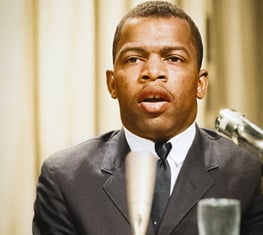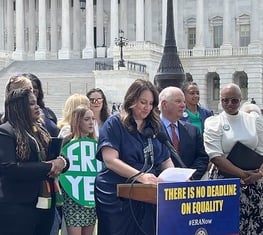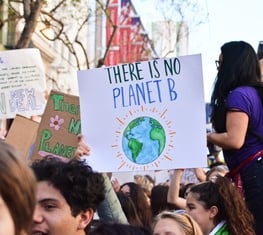Early Voting Measures Reduce Long Lines, Increase Access to the Polls
In November, millions of Americans spent hours waiting in long lines in order to exercise their right to vote. The delays sparked a national discussion on what must be done to improve our voting system. One solution? Implement better early voting laws.
Early voting is crucial for America’s democracy. Evidence shows that early voting helps decrease wait time at the polls by helping to lessen crowds and provide voters with increased access to the polls. Over 32 million votes cast in the November 2012 election were made at early voting sites, which enabled voters to hit the polls over weekends or at another time convenient to their schedule rather than take leave from work on Election Day. What’s more, early voting helps voters overcome the barriers that have kept them home in the past. According to the U.S. Census Bureau, of the more than 15 million registered voters who did not vote in the 2008 election, nearly a quarter were out of town on Election Day or faced problems traveling to the polls.
As the nation focuses on the urgent need for voting reforms, many states are seeing the benefits that early voting provides to our voting system and our democracy. In recent months, Leagues in Michigan, Ohio and elsewhere have helped push for early voting legislation to increase access to the polls and ensure that all residents can cast a vote. Efforts have recently paid off in Florida and New York, where the League of Women Voters of Florida and the League of Women Voters of New York have successfully lobbied for crucial early voting legislation.
Voters in Florida faced some of the longest voting lines in the country last November, with some Floridians waiting for up to nine hours in order to cast their vote. Because of the outcry following these long waits, Florida legislators have accepted that early voting laws are crucial to improving elections. Experts now say that reductions to the state’s early voting laws made in 2012 were largely responsible for the state having the longest average wait time nationwide this past November.
In response, the Florida Senate at the end of April passed a bill allowing county elections supervisors to restore Florida’s number of early voting days from eight to 14. The bill, which Governor Rick Scott has announced he will sign, would also increase the number of early voting sites, and includes other pro-voter reforms including enabling Floridians to move within the state and still cast a regular ballot, and ensuring that absentee ballots have a chance to be counted even if the voter forgets to sign the outside of the envelope.
“We believe the changes in this bill will help prevent the long lines, observed all across the world, that Florida voters endured last November,” said Deirdre Macnab, president of League of Women Voters of Florida, which lobbied extensively for voting reforms after the November election.
New York isn’t often a state that comes up when discussing issues at the polls, but New York’s voter participation rates rank near the lowest in the nation. The New York General Assembly sought to address this issue and to encourage greater voter participation when last month it announced its decision to pass early voting legislation in efforts not only to shorten waits at polling places, but also expand voting access. In implementing early voting, New York joins 32 other states and the District of Columbia in making some form of early voting available to its residents.
"In recent years, we have seen increasingly aggressive efforts to make it harder for millions of Americans to vote. Here in New York we are pushing back," said State Attorney General Eric T. Schneiderman.
New York’s early voting measure will institute a 15-day early voting period for general elections and an eight-day early voting period for primary and special elections. The bill also requires that – in addition to a site at the local Board of Education – each local board of elections designate at least four early voting sites, all of which are geographically located to provide voters equal access, and enable the Board of Education to add additional early voting sites as needed.
"The League applauds [the New York Assembly] for passage of this early voting legislation,” said Barbara Bartoletti, legislative director of the League of Women Voters New York. “This [legislation] will encourage better voter participation. And we look forward to making this proposal law."
These efforts to implement early voting in Florida and New York show that bipartisan solutions to voting issues are possible. Year-round, League members and voting rights advocates not only battle restrictions to voting rights, but also work to implement positive voting reforms. The League believes that election reforms such as early voting are an important step in making our democracy free, fair and accessible.
Sign Up For Email
Keep up with the League. Receive emails to your inbox!
Donate to support our work
to empower voters and defend democracy.





